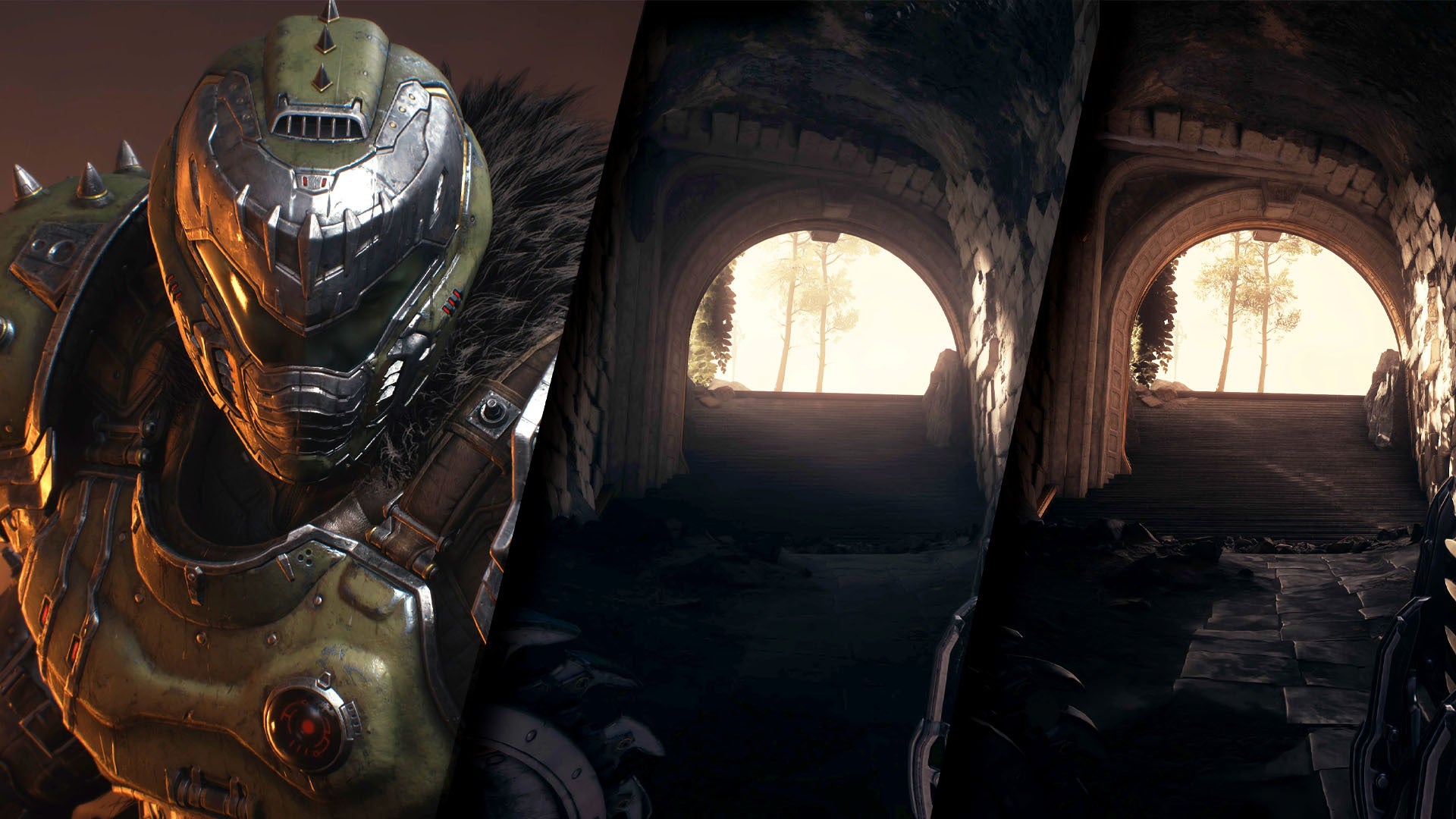Doom: The Dark Ages has finally received its promised path tracing upgrade on PC, adding a further dimension of visual fidelity to an already impressive game. To see how the new graphics mode compares to the standard RT available at launch, some testing was in order.
I ran the game on a high-end desktop PC with an RTX 5090 graphics in the new path tracing mode, while my colleague John tested the game on a laptop RTX 5090 with standard RT graphics. It made for a fascinating comparison, with some areas exhibiting just how good the standard RT graphics already were, while other scenes showed off the kind of uniquely realistic visuals that only path tracing can provide.
We opted for the second mission in the game, Hebeth, as it includes plenty of Doombase-style shiny surfaces and therefore ought to be a good showcase for the new graphics techniques in play.
One of the first thing we noticed is that the cutscenes show relatively few changes in side-by-side comparisons. That’s because the cutscenes are authored with plenty of extra light sources placed just where they’re needed to light subjects with the cinematography in mind, in comparison to gameplay which needs to look correct no matter what the player is doing. Given that the game already featured ray-traced global illumination (RTGI), that means these controlled scenes tend to look fairly similar between a PC running with standard RT and path tracing.
